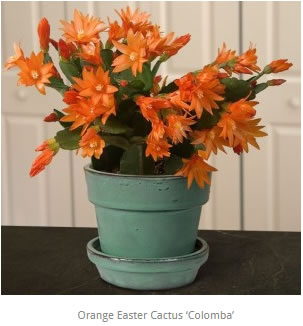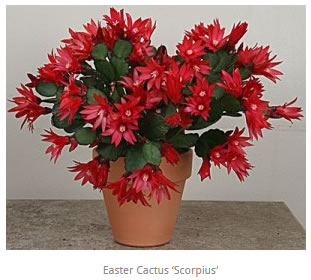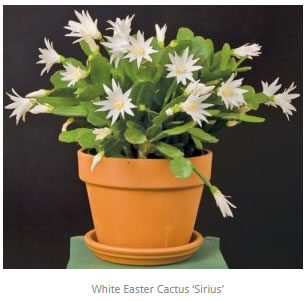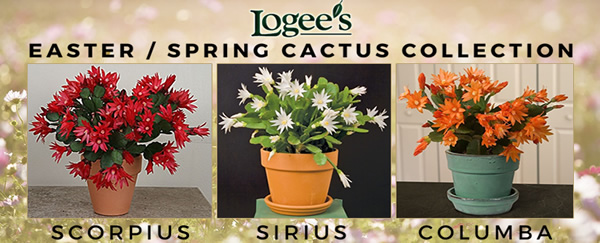
How to Successfully Grow and Care for Easter Cactus
Easter Cactus (Rhipsalidopsis), or Spring Cactus, bloom in many cheery colors and the flowers arrive in profusion from March until May. Their star-shaped blooms open at sunrise and close at sunset and last for several weeks. Easter Cacti are native epiphytes and grow in the upper story of the trees in the forests of eastern Brazil. Knowing a plant’s native habitat is good information because it provides the gardener with tips on how to be successful when growing the plant.
Natural Adaptation
Easter Cacti make excellent houseplants because of their adaptation to epiphytic life. Their ability to grow in partial sun and drier conditions is directly related to their ability to grow in trees in their native habitat. Neglecting your Easter Cactus is even welcome at times.
Unique Characteristics
Flat succulent leaf segments are characteristic of Easter Cactus. They branch freely creating a full plant specimen with shiny, leathery leaves.
Tricks to Blooming
The flowering cycle starts in spring (right around Easter) and flower bud set is induced by dry soil and cool temperatures in early winter. As fall approaches, usually in October, soil moisture should be reduced with only occasional watering given to keep the plant from shriveling up.
There also needs to be a cool period where temperatures drop at night into the high 50’s to just above freezing for a couple of months. Leave the plants outside later in the fall (make sure the temperatures remain above freezing) or keep the plants inside near your coolest window. The objective is to bring the night temperatures down below 60°F for a couple of months to induce flower bud set.
Watering
Bud formation usually starts after the first of the year and the dry period needs to continue until the buds are visible. After flowering has finished and the days are getting longer and warmer, the plants begin their growth mode. At this time watering is increased and fertilizer can be added. As with most succulents, bring the soil to near dryness between waterings and then thoroughly saturate the potting mix.
Fertilizer
Fertilizer can be added in a soluble form using a balanced formulation i.e. 5-7-3 or a 10-10-10 when you water. Or plants can be top dressed with an organic granular fertilizer. They are moderate feeders but will respond with abundant growth during the summertime when fed regularly.
When to Repot
Plants can be repotted once flowering has finished. It’s important to use a well-drained potting mix; one that has good air porosity, much the same as you would use for any succulent or cactus.
Pruning
Prune after flowering. Once the size of the plant has filled out the largest pot desired, prune annually by cutting back the outer leaflets symmetrically over the plant to reduce the overall size and volume.
Insects
Generally, Easter Cactus don’t have any trouble with insects. Mealybug and scale can affect the plants but it’s not a preferred food source and it takes a nearby, infected plant to start the problem.
Trouble Shooting
The greatest problem with Easter Cactus culture is stem and root rot caused by a wet, heavy potting mix. Most of the soilless or peat lite mixes work well and you can add additional perlite to the mix if it seems a bit heavy. There are special cactus soils available for use with cactus and succulents. Growing your Easter Cactus in a clay pot will provide better soil aeration and a quicker dry down of the potting mix. This usually prevents stem and root rot.
Logee’s Easter Cactus Collection
If you’re interested in adding some springtime color to your home, be sure to check out our special Easter Cactus Collection, which provide a profusion of colorful flowers that bloom from March until May:
Visit the links below to learn more about the Spring / Easter Cactus plants mentioned in this article:
Watch this video for more helpful tips on how to grow and care for Easter Cactus:
Thank you for visiting Logee’s. Before you go, please be sure to explore our selection of fruiting, rare and tropical plants. And don’t forget to request your free Logee’s catalog, too!





